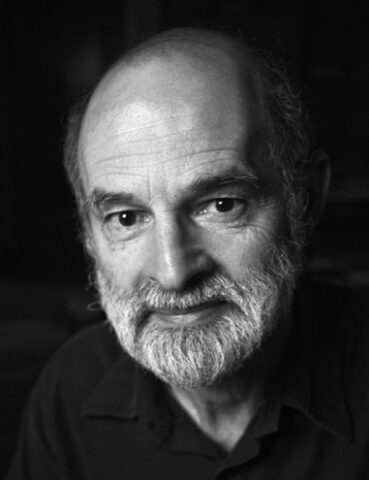Citation
Gary Glatzmaier is known worldwide for his pioneering use of massive three-dimensional numerical models that simulate convection in the interiors of planets and stars. His most significant scientific accomplishment is developing a mechanically and thermodynamically consistent numerical model of the geodynamo that produces occasional, spontaneous polarity reversals of the magnetic field that closely resemble the polarity reversals in the paleomagnetic record.
In a series of papers beginning in 1995, Gary and his collaborator Paul Roberts made first-principles numerical simulations of the magnetohydrodynamic dynamo process in the Earth’s electrically conducting fluid outer core, thereby providing a convincing demonstration that the main geomagnetic field is generated by a self-sustaining fluid dynamo.
In addition to being an important scientific achievement—the origin of Earth’s magnetic field had long been cited as one of the major unsolved problems in physics—this was also a game-changing technological advance. Thanks to Gary’s vision, physical insight, and skill at numerical modeling, along with his generosity in sharing his numerical models with the community, we can now make direct comparisons between numerical dynamo predictions and magnetic data from the Earth and other planets.
Following his work on the geodynamo, Gary also made seminal contributions to the dynamics in Earth’s mantle and the interiors of planets and satellites throughout the solar system, particularly the gas giants Jupiter and Saturn and their moons.
Gary has served with distinction as an officer in the U.S. Navy; as a member of numerous national and international science panels and advisory boards; as a fellow of AGU, the Los Alamos National Laboratory, and the American Academy of Arts and Sciences; and also as a member of the University of California, Santa Cruz, faculty and the U.S. National Academy of Sciences.
Gary’s unselfish approach to research has spawned a new subfield of our science that aims to reveal the origin of planetary magnetic fields, starting from basic physics and chemistry. His work has inspired a generation of young scientists eager to use numerical dynamos as a tool for understanding how magnetic fields are produced in objects as large as Jupiter, as small as planetary embryos, and as distant as the exoplanets.
The purpose for which the John Adam Fleming Medal was envisioned—to recognize original and highly significant research in geomagnetism and related sciences—is a most fitting description of Gary Glatzmaier’s fundamental and groundbreaking contributions.
—Peter Olson, Johns Hopkins University, Baltimore, Md.
Response
Thank you, Peter, for those kind words. I am delighted and certainly honored to receive this year’s John Adam Fleming Medal.
I have been very fortunate to have had great opportunities and wonderful colleagues over the years.
Nearly all my research has been based on computer simulations. I wrote the first version of my convective dynamo code 3 decades ago while a postdoctoral researcher at the University of Newcastle in the United Kingdom, learning dynamo theory from Paul Roberts and Chris Jones.
I then spent 16 years at the Los Alamos National Laboratory doing computational studies of magnetic field generation in the Sun, Jupiter, and the Earth. I also simulated global circulation in the Earth’s atmosphere and mantle. I’m thankful for all the support I received during those years from NASA and from the University of California’s Institute of Geophysics and Planetary Physics (IGPP). I want to mention Bob Malone, who got me interested in global climate modeling, and Chick Keller, the director of the Los Alamos branch of IGPP at that time. IGPP also sponsored the annual Los Alamos Mantle Convection Workshop, where I first met and collaborated with many now longtime friends and colleagues like Jerry Schubert, Peter Olson, Uli Christensen, and many others.
In 1998 I joined the faculty of the Department of Earth and Planetary Sciences at the University of California, Santa Cruz (UCSC). My teaching there over the past 16 years has been a great experience. I made sure that each of my graduate students learned how to write a two-dimensional nonlinear magnetoconvection code. I have also had many productive research collaborations with my colleagues at UCSC. In particular, my good friend and UCSC colleague Rob Coe collaborated with Paul Roberts and me on geodynamo studies.
When I got the first version of my dynamo code running 30 some years ago, I never imagined I would still be using it today or that others would be using some version of it for their research. I have been improving this code over the years, and now, with the latest massively parallel supercomputers, which allow us to run much higher resolution and more realistic cases, it is again time for me to make some major improvements to the anelastic equations and numerical methods used in the code.
In closing I want to thank my wife, Tracy, who has been my best friend.
—Gary A. Glatzmaier, University of California, Santa Cruz, Calif.
Citation: AGU (2015), Gary A. Glatzmaier receives 2014 John Adam Fleming Medal, Eos, 96, doi:10.1029/2015EO021829.
Text © 2015. The authors. CC BY-NC 3.0
Except where otherwise noted, images are subject to copyright. Any reuse without express permission from the copyright owner is prohibited.

